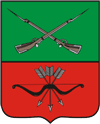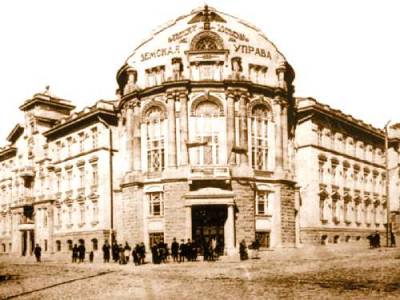Discover Alexandrovsk Uezd!
|
FIND US ON FACEBOOK!  Zaporizhia (Ukraine)
Zaporizhia (Zaporozhe), formerly Alexandrovsk, located on the left bank of the Dnieper River in the Ukraine, 45 miles (70 km) south of Dnepropetrovsk, below the Dneprostroi Dam, on the main railroad from Moscow to Sevastopol, had in the early 1950s a population of approximately 300,000. It was a significant industrial center with metallurgical plants and chemical works. Mennonites from the Chortitza settlement founded the village of Schönwiese near this city and soon developed a large-scale milling industry and factories that became the nucleus of its industrial significance. Among the early Mennonite firms of Schönwiese, now a part of Zaporizhia, were Lepp and Wallmann, A. J. Koop, Hermann Niebuhr, and Hildebrandt and Pries. The strategic location on the Dnieper River and the need for agricultural machinery speeded the rapid growth. The Lepp and Wallmann factory had an annual production of 900,000 rubles and the A. J. Koop factory of 610,000 (1911). The largest milling industry was Niebuhr & Co. After the Revolution the industries were nationalized and developed by the Soviets. The first combines in Russia were produced by Mennonite engineers in former Mennonite factories of Zaporizhia. Peter Dyck, Gerhard Hamm, Kornelius Pauls, and others, mostly sons of Mennonite industrialists who had studied in Germany, started to build combines in 1925. (Hamm went to the United States to study American industries.) Their success was reported to the industrial headquarters in Moscow. In 1927 after a commission had examined the combines Kalinin himself bestowed the Order of Lenin on the Mennonite engineers and the director of the factory. From now on the "Kommunar" factory received priority till the output reached 10,000 per year. During the wave of exiles in 1933 the Mennonite engineers were sent into exile. When Hitler's army invaded the Ukraine, the Mennonites who were working in large numbers in these industries were also evacuated. Miraculously some escaped this evacuation and came to North and South America after World War II. It can be assumed that some of the evacuated Mennonites found their way back to Zaporizhia, although little information is available at this time (1959). Global Anabaptist Mennonite Encyclopedia Online. Retrieved 12 February 2010 http://www.gameo.org/encyclopedia/contents/Z24.html
|
Site menu
Search
Calendar
Entries archive
Our poll
Site friends
Statistics
Total online: 1 Guests: 1 Users: 0 |
|||||||||||||||||||||||||||||||||||||||||||||




